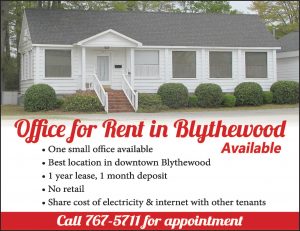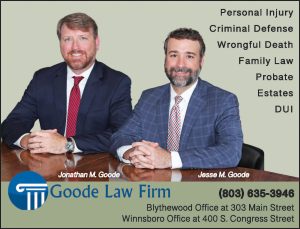COLUMBIA (June 9, 2016) – When members of Richland County Council prepared, at their May 24 meeting, to delete verbiage from the County’s zoning law designed to ensure that developers do not stuff new projects with more houses than the community can sustain, LongCreek Plantation resident Sam Brick, a retired attorney and government watchdog, took note and then took on Goliath.
To Brick’s credit, and to his surprise, he won the battle.
“Council advertised the proposed deletion of critical protective language in the zoning law as ‘clarifying,” but they were not clarifying anything. They were going to change the law by taking out the phrase: ‘but in no case shall it (the individual lot) be less than…’
“That phrase is specific to each zoning district and is included in the zoning regulations of every zoning code to specify the minimum size allowed for lots in that particular zoning district,” Brick said.
Within his allotted three minutes before Council, Brick passionately explained how removing that phrase would virtually emasculate zoning designations in Richland County.
“By removing this phrase, Council would make it legal to do what they have been doing illegally for years – allowing developers to skirt the zoning laws by putting more lots in a development than the law allows. “
This illegal reduction of lots crept in, Brick said, through the Green Code provision (later called Open Spaces provision), passed several years ago by Council to allow developers the benefit of reducing the sizes of their lots on certain conditions, one of which was that the developer would set aside a certain amount of green space for parks, walking trails and other amenities in addition to the space already required for roads, buffers, rights-of-way, etc.
Brick said he first become concerned about the reduction of lot sizes a couple of years ago when, under the guise of the Green Code provision, developers in his own neighborhood were granted more dense zoning designations by County Council than were allowed by the County’s zoning law.
“It was a developer’s dream come true. They were turning areas designated for medium density into high density without having to ask for a zoning change,” Brick said.
“Without that phrase, developers would be free to reduce lots and, in effect, change the zoning of a development without having to apply for rezoning,” Brick told Council members.
Prior to appearing on the County Council agenda, the proposed amendment first appeared the month before on the Planning Commission’s agenda. Brick emailed residents in his neighborhood encouraging them to attend the Commission meeting and to speak out against removing the critical phrase.
“I am not optimistic in my chances,” Brick wrote to his neighbors, “but someone needs to attempt to uphold the integrity of our zoning laws and, at least, in the few minutes allotted, explain the effects of what the Commission is being asked to do.”
The only visible support Brick received at the meeting came from neighbor and friend Bernie Randolph.The task before Brick was daunting.
In spite of Brick’s plea to save the phrase, the Commission voted unanimously to recommend that Council ‘clarify’ the zoning code by removing the phrase.
Addressing Council on May 24, Brick explained how the County’s Planning Department has been ignoring the target phrase for some time, allowing a developer, under the Open Spaces provision, to put in as many houses as the developed area could fit by dividing the entire area by the stated minimum lot size for the relevant zone without first deducting the space needed for roads, easements, wetlands, etc.
“This resulted in approximately 20 percent of new residential developments having lots substantially smaller than the zoning allows in spite of the legal requirement for minimum lot sizes,” Brick said.
Brick told Council that while each zoning district gives a specific exemption for valid Open Space developments, the Open Spaces provision has a formula that must be adhered to entirely if the developer is to take advantage of the reduced lot portion of the provision, Brick said.
After Brick’s three minutes ended, Councilwoman Joyce Dickerson, who represents much of Blythewood, moved that the proposed zoning amendment (deleting the ‘but in no case’ phrase) be adopted.
After a long pause and no second, Chairman Torrey Rush announced that the proposed amendment had failed.
Brick said he was happy with the vote, but was especially encouraged that, in discussions following the vote, that several Council members confirmed, verbally, that the amendment was not needed and that the Open Spaces provision should be re-examined.
“I’m very happy with the outcome,” he said. “But the fight is far from over.”











